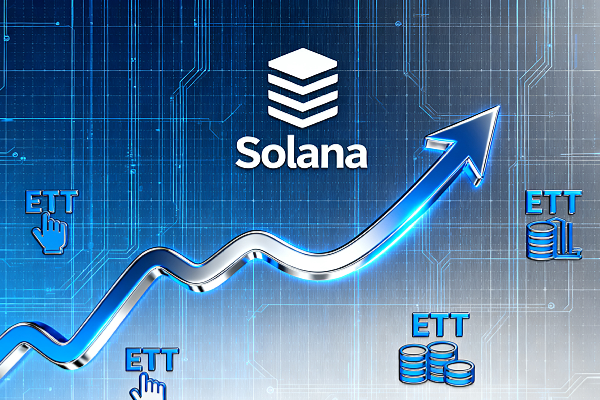Intensifying panic, US stocks once again lead to Bitcoin crash

Last night, Bitcoin continued to plunge, falling to $76,650 and now quoting at $77,600, a 24-hour drop of 4.5%, to a new low since November 2024.
According to Coinglass data, the total liquidation volume of Ethereum in the past 12 hours reached $765 million, of which long orders were liquidated at $674 million and short orders were liquidated at $91.21 million.
Since March, the total market value of the cryptocurrency sector has continued to fall, falling to $2.6 trillion as of writing, and now reported at $2.62 trillion, a 24-hour drop of 7%.
Investor confidence is seriously divided under the tariff stick
The recent intensive adjustment of tariff policies by US President Trump has caused severe market fluctuations. Trump signed an executive order on February 1 to impose a 25% tariff on products imported from Mexico and Canada. On February 3, Trump announced that the tariff increase measures on the two countries would be suspended for 30 days and negotiations would continue. According to this decision, the relevant additional tariff measures took effect on March 4. However, on the 6th local time, Trump signed an amendment to the tariffs on Mexico and Canada, exempting products that meet the "United States-Mexico-Canada Agreement" (USMCA) from tariffs until April 2.
On March 7, Trump said that the tariffs would be suspended to help Mexico and Canada, and the tariffs would be fully implemented from April 2. "Tariffs may rise over time."
Although the fundamentals of the US economy remain solid - the latest employment data shows that 151,000 new jobs have been added, the unemployment rate remains at a historical low, and Federal Reserve Chairman Powell also emphasizes that the economy is in "good shape" - investor confidence has been seriously divided.
In an interview with Fox News, Trump said that economic policies may cause short-term shocks, but he believes that this will promote future prosperity. "I don't like to predict things like this. What we are doing is very big, so there is a transition period." Analysts point out that the White House's strategy of trying to force the Federal Reserve to cut interest rates by suppressing the stock market, coupled with the risk of government shutdown and federal spending cuts, is pushing the economy into a "stagflation trap."
Trump's chaotic and disorderly adjustment of tariffs and slashing of federal spending have made the investment market outlook increasingly bleak. The market, which originally relied on the excellent economic performance of the United States to rise, has suffered a major reversal.
US stocks plummeted, and Wall Street panic intensified
On March 10, the US stock market fell further, with the S&P 500 index falling 2.7%, the largest single-day drop so far this year. The Nasdaq index, which has a high proportion of technology stocks, was the most sold among the major indexes, falling 4%, the largest single-day drop since September 2022. Tesla recorded its largest single-day drop since September 2020, wiping out all its gains after the election, and Nvidia fell more than 5%. Risk-averse trading pushed defensive utilities against the market.
US stocks are facing multiple unfavorable factors, including concerns about a US recession, escalating trade tensions, the risk of a US government shutdown, market expectations that Japan will soon raise interest rates, the lifting of yen carry trades, and the loss of key technical indicators. Market sentiment has deteriorated, and investors have turned to safe-haven assets.
The three-week market sell-off has intensified further as investors worry that the uncertainty of chaotic tariff policies will lead to a recession. Citi analyst Drew Pettit said, "This massive sell-off feels terrible. We have high expectations for growth, and all this selling is just a readjustment of the new risks we face."
Michael Wilson, chief U.S. equity strategist at Morgan Stanley, analyzed, "If economic growth declines further and a recession is likely, the S&P index may fall another 20%," he warned, "We are not there yet, but things may change soon." As risks rise, funds flow into safe-haven assets, short-term government bonds rise, and Bitcoin falls to a four-month low.
Strategic reserves become empty talk?
Also on March 7, the crypto industry ushered in the long-awaited executive order on the strategic reserve of Bitcoin. At around 8 a.m. on March 7, David Sacks, director of AI and cryptocurrency at the White House, posted on social media that President Trump signed an executive order to establish a strategic Bitcoin reserve a few minutes ago. However, after this great good news came out, the price of Bitcoin actually plunged immediately, falling from around $90,000 to below $85,000 within an hour. As the U.S. stock market continued to fall, the price of Bitcoin naturally followed suit, falling to its lowest point since November 2023 last night.
Related reading: "Trump signed an executive order on the strategic reserve of Bitcoin, why did the market fall sharply?"
David Sacks wrote in a tweet that the reserve of the strategic reserve will be capitalized by Bitcoin owned by the federal government, that is, Bitcoin confiscated by the U.S. government in criminal or civil asset forfeiture procedures. The U.S. government will not sell any Bitcoin deposited in the reserve, but it is also unlikely to further purchase more Bitcoin, "which means that it will not cost taxpayers a penny."
At the first White House Crypto Summit held on Friday night, the market did not hear good news, but instead announced to the world through live broadcast a certain degree of "flattery" in the cryptocurrency market.
At the same time, a spokesman for the UK Treasury said, "Volatility makes Bitcoin unsuitable as a reserve asset for the UK, and the UK has no plans to introduce Bitcoin reserves similar to those in the United States."
In a best-selling book, "The Upside," the author wrote, "As for cryptocurrencies, Spitznagel feels that there is too little data and too much noise to accurately evaluate them now. Taleb speaks more directly. He said that Bitcoin cannot be used as a safe haven for investment because it is highly correlated with the market. Just think about the crisis in March 2020, when Bitcoin fell more than the market average. This shows that it is worthless as a tool to hedge the risk of market collapse."
On March 11, Arthur Hayes, co-founder of BitMEX, wrote, "The plan is as follows: Be patient, don't rush. Bitcoin may bottom out around $70,000, a 36% correction from its historical high of $110,000, which is very normal in a bull market. Then, we need a free fall in U.S. stocks, followed by the bankruptcy of big players in traditional finance. Then, the Federal Reserve and central banks of various countries begin to release water to save the market, and at that time, it's time to go all in Traders will try to buy at the bottom. If you are risk-averse, you can wait until major central banks start to release liquidity before increasing your position. You may not be able to buy at the bottom exactly, but you don’t have to suffer through a long consolidation period and potential floating losses. "
In one word, you can only wait.
Google Translate









